Where Do Peppercorns Come From? The Complete Origin Story
Peppercorns originate from the Piper nigrum plant, which is native to the Malabar Coast of South India. This spice has a rich history dating back to ancient times, where it was so valuable it was called "black gold" and used as currency. Today, peppercorns are cultivated in tropical regions worldwide, including Vietnam, Indonesia, Brazil, and Malaysia.
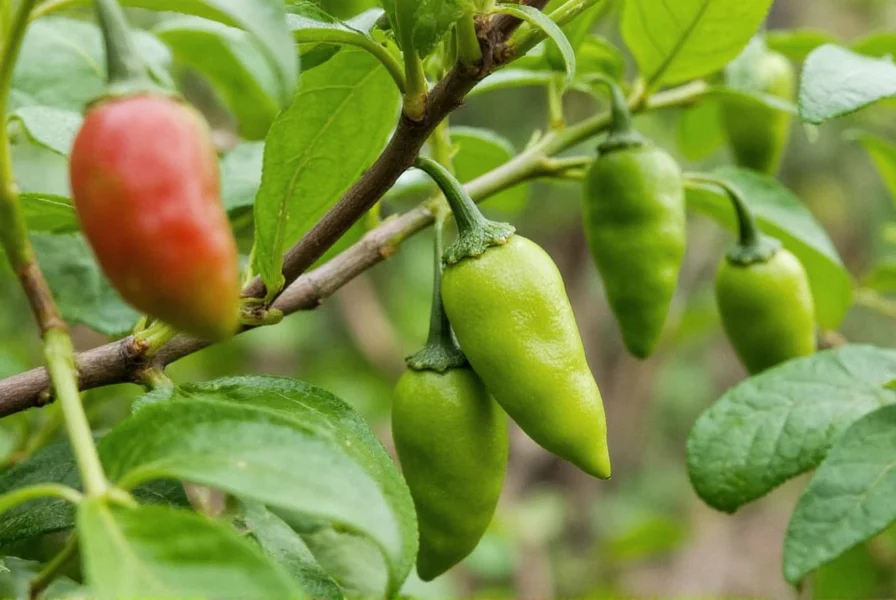
The Historical Journey of Peppercorns
Peppercorns were a highly prized commodity in ancient Rome and medieval Europe. They were worth more than their weight in silver and used to pay taxes, dowries, and even as currency. The spice trade routes that brought pepper from India to Europe shaped global history, leading to the Age of Exploration and the rise of maritime empires.
Botanical Background: The Piper nigrum Plant
Scientifically known as Piper nigrum, the pepper vine is a flowering plant in the Piperaceae family. It is a woody vine that can grow up to 30 feet long, requiring support structures like trellises or poles. The plant thrives in warm, humid tropical climates with temperatures between 70-90°F (21-32°C) and high rainfall.
Native and Modern Cultivation Regions
| Country | Key Regions | Production Notes |
|---|---|---|
| India | Malabar Coast (Kerala), Karnataka | Traditional origin; known for high-quality black pepper |
| Vietnam | Ba Ria-Vung Tau, Dong Nai | World's largest producer; high yield but variable quality |
| Indonesia | Sulawesi, Sumatra | Known for Sarawak pepper; high quality, aromatic |
| Brazil | Pará, Acre | Emerging producer; sustainable farming practices |
| Malaysia | Sarawak, Sabah | High-quality white and black pepper varieties |
How Peppercorns Are Grown and Harvested
Pepper vines are typically trained on trellises or poles. The berries (peppercorns) develop in clusters along the vine. Harvest timing determines the pepper type:
- Black pepper: Unripe green berries picked and sun-dried until dark brown/black
- Green pepper: Unripe berries preserved in brine or freeze-dried
- White pepper: Fully ripe berries soaked to remove outer skin, then dried
- Pink/red pepper: Ripe berries used fresh or dried (note: pink is not true pepper)
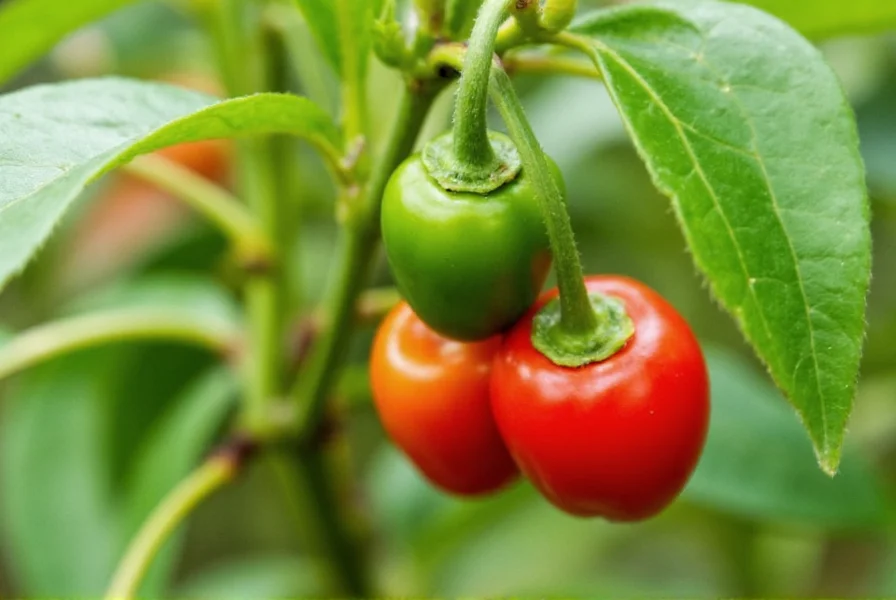
Types of Peppercorns
| Type | Harvest Time | Processing | Flavor Profile | Best For |
|---|---|---|---|---|
| Black Peppercorns | Unripe | Dried | Pungent, earthy, bold | All-purpose seasoning |
| White Peppercorns | Ripe | Skin removed, then dried | Mild, musty, fermented notes | Creamy sauces, soups |
| Green Peppercorns | Very unripe | Brined or freeze-dried | Fresh, citrusy, herbal | Steak au poivre, Thai dishes |
| Pink Peppercorns | Not true pepper | Berries from Schinus tree | Sweet, fruity, floral | Garnishes, desserts, salads |
| Red Peppercorns | Very ripe | Fresh or dried | Fruity, floral, mild heat | Exotic dishes, cocktails |
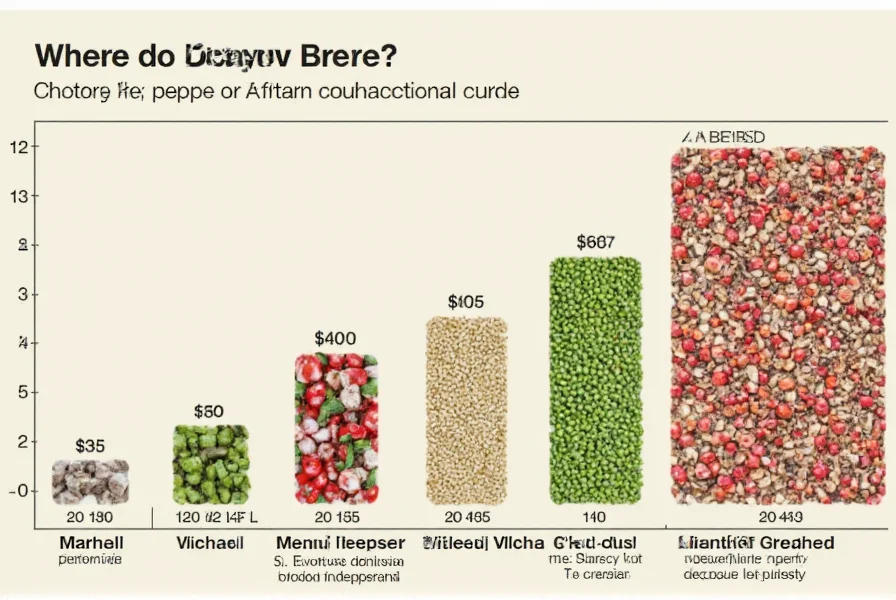
Additional Culinary Information
Buying Guide
- Whole vs Ground: Whole peppercorns retain flavor longer than pre-ground pepper
- Packaging: Airtight containers preserve freshness
- Country of Origin: Indian Malabar, Vietnamese Lampong, and Indonesian Sarawak are top-tier sources
Cooking Tips
- Grind Fresh: Grind right before use for maximum flavor
- Pair Smartly: Black pepper pairs with rich meats; white pepper shines in creamy dishes
- Toast for Intensity: Lightly toast whole peppercorns to release deeper flavors
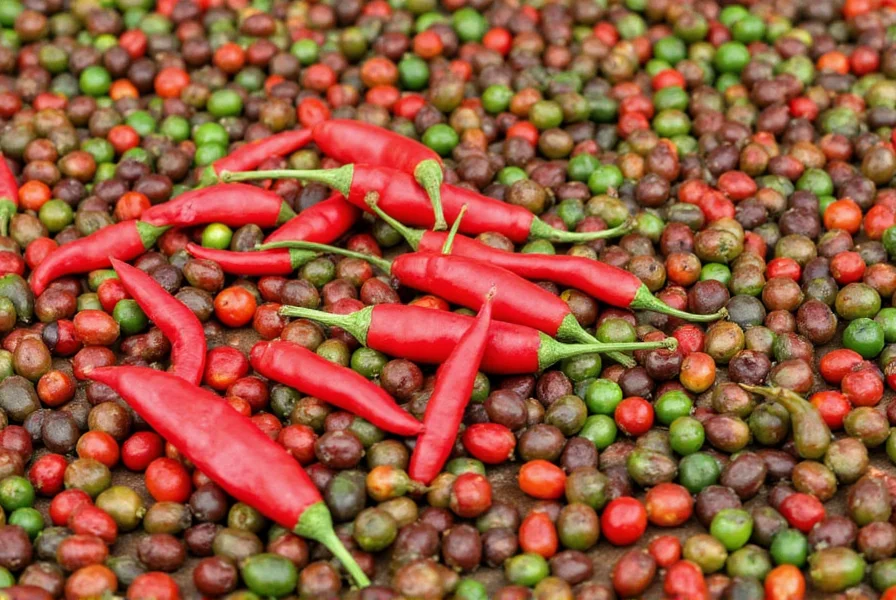
Fun Facts About Peppercorns
- Pepper was once so valuable it was called "black gold" and used to pay taxes and dowries in ancient Rome.
- In medieval Europe, pepper was worth its weight in silver and considered a luxury item.
- The word "peppercorn rent" comes from old leases where tenants paid symbolic amounts of peppercorns instead of money.
- Black pepper contains piperine, which enhances nutrient absorption in food.
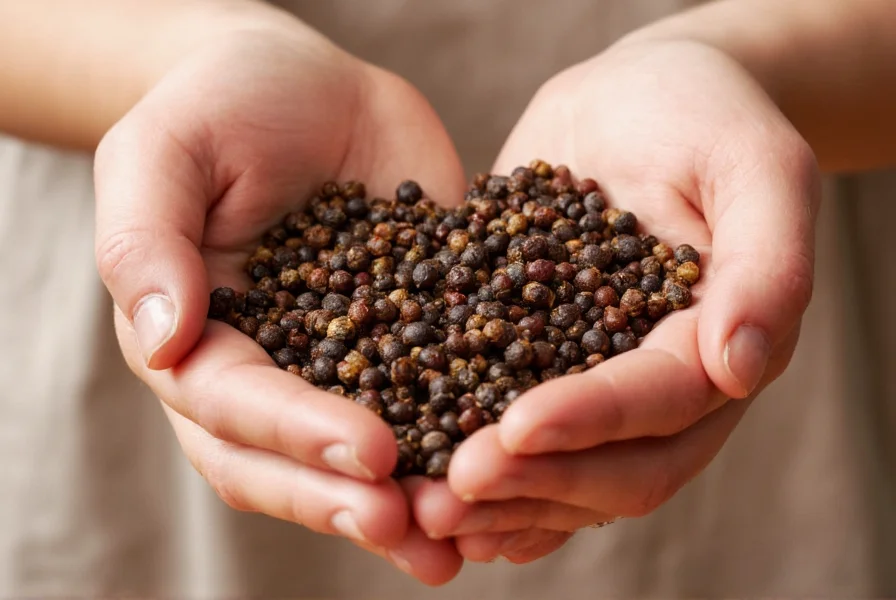
Frequently Asked Questions About Peppercorns
Where do peppercorns originally come from?
Peppercorns originate from the Piper nigrum plant, which is native to the Malabar Coast of South India. While they're now cultivated in many tropical regions worldwide including Vietnam, Indonesia, Brazil, and Malaysia, their original home is Southern India.
Are peppercorns actually berries?
Yes, peppercorns are technically dried berries. They're the fruit of the Piper nigrum vine. When ripe, these berries are red in color, but they're harvested at different stages of ripeness and processed differently to create the various types of pepper we know.
What's the difference between black, white, and green peppercorns?
The difference comes down to harvest time and processing:
- Black peppercorns: Unripe green berries that are sun-dried until they turn black
- White peppercorns: Fully ripe berries with the outer skin removed, then dried
- Green peppercorns: Very unripe berries preserved in brine or freeze-dried
Can you grow peppercorns at home?
Yes, but it's challenging outside tropical climates. Pepper vines need warm temperatures (70-90°F), high humidity, and partial shade. They can grow as houseplants in temperate regions but rarely produce fruit indoors. If you live in USDA zones 10-12, you might successfully grow a pepper vine outdoors.
Why were peppercorns called "black gold"?
Peppercorns earned the nickname "black gold" because of their immense historical value. In ancient Rome and medieval Europe, pepper was so valuable it was used as currency, to pay taxes, and as part of dowries. It was often worth more than its weight in silver, making it a highly prized commodity along spice trade routes.
Are pink peppercorns real peppercorns?
No, pink peppercorns are not true peppercorns. They come from a completely different plant (Schinus molle or Schinus terebinthifolius), native to South America. Despite not being related to Piper nigrum, they're often sold alongside other peppercorns due to their similar appearance and mild peppery flavor with sweet, floral notes.
How long do whole peppercorns last?
When stored properly in an airtight container away from light and moisture, whole peppercorns can retain their flavor for 2-3 years. Ground pepper loses its potency much faster, which is why grinding your own peppercorns is recommended for maximum flavor.
Why is freshly ground pepper better than pre-ground?
Freshly ground pepper has significantly more flavor and aroma because the essential oils and compounds that give pepper its distinctive taste begin to evaporate and degrade as soon as it's ground. Pre-ground pepper loses up to 80% of its volatile compounds within an hour of grinding, which is why whole peppercorns and a grinder are preferred by culinary professionals.

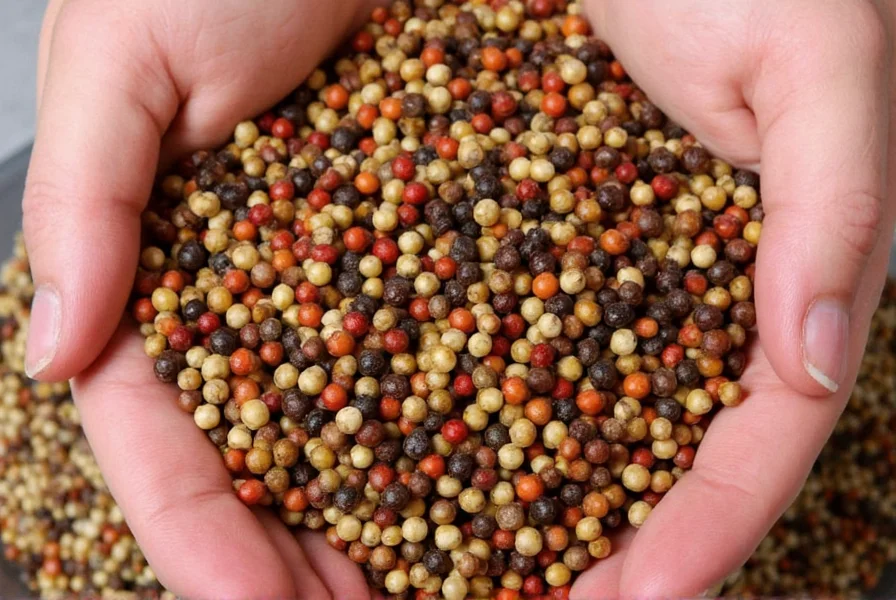









 浙公网安备
33010002000092号
浙公网安备
33010002000092号 浙B2-20120091-4
浙B2-20120091-4